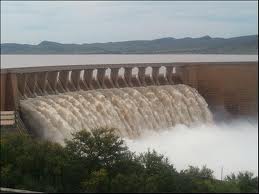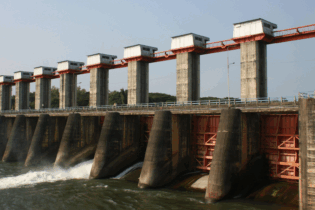After a decade-long lull, the construction of large dams has accelerated. However, evidence shows that, in the vast majority of cases, large dams are not economically viable.
According to new research from Oxford University’s Saїd Business School, emerging economies risk drowning their fragile economies in debt owing to ill-advised construction of large dams. Based on data from 245 large dams in 65 different countries, the study claims to be an authoritative investigation of whether or not large dams work, based on the most extensive dataset of its kind. The study found that, on average, the actual construction costs of large dams are 90% higher than their budgets at the time of approval. As a result, cost overruns are very high. In addition to this, mega-dams take an average of just over eight years to construct, with some taking up to ten years – an exceedingly long time. This leaves dams vulnerable to currency volatility, hyperinflation, political tensions and changes in water availability and electricity prices; a combination of which constitute a typical disaster. Researcher Dr Atif Ansar points out that advocates of mega-dams tend to focus on rare stories of success in order to get their projects approved. “The purported success of the Hoover dam in the USA, for example, is an often-heard argument in favour of building new large dams. Instead of relying on the outcome of just one project, decision makers should consider evidence for the entire population. In the case of large dams, the probability of failure dominates.”Ansar says that leaders of emerging economies, who are truly interested in the welfare of their citizens, should stay away from mega-dams. “Our research shows that as a general rule of thumb, many smaller, more flexible projects that can be built and go online quicker, and are more easily adapted to social and environmental concerns, are preferable to high-risk dinosaur projects like conventional mega-dams,” he concludes.
According to the study, dam planners have not learnt from the past because dam budgets today are as wrong as they were during the 70 years for which data exists. “Experts making forecasts about megaprojects can be usefully grouped into fools or liars. Fools are the reckless optimists who see the future with rose-tinted glasses. These forecasting fools ignore hard facts and uncertainty, betting the family silver on gambles with very low probability of success. Liars deliberately mislead the public for private gain, fiscal or political, by painting overly-positive prospects of an investment, just to get it going. The systematically poor outcomes of large dams suggest that fools and liars have been at the helm,” says researcher Prof. Bent Flyvbjerg. “The study also found that the magnitude of cost overruns has not declined over time. Dam budgets today are as wrong as at any time during the 70 years for which data exist. Dam planners seem to not learn from the past,” the authors, Prof Bent Flyvbjerg and Dr Atif Ansar, said in a press release.







